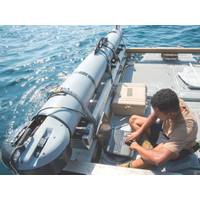Unmanned Underwater Vehicles: Is Bigger Better?

Undersea Superiority will rely on Large Underwater Vehicles, but the question begs ... Is bigger better? The U.S. Navy has many mundane, messy and perilous underwater missions that are better performed unmanned vehicles. When considering the right vehicle for the mission, size does matter. Unmanned Underwater Vehicles (UUVs) are classified into three basic size categories: man-portable, lightweight, and large displacement based on size (as measured by displacement) and endurance.
General Dynamics, Eversource Energy to Cut Consumption at Pittsfield Facility
Engineers with General Dynamics Mission Systems are teaming up with experts at Eversource Energy to significantly improve the energy efficiency at the company's 870,000 square-foot facility located in Pittsfield, Mass. Eversource Energy is the utility provider for more than 3.6 million customers in Massachusetts, Connecticut and New Hampshire, including General Dynamics' Pittsfield location. The two companies began work last fall, developing and implementing a multi-year plan to reduce the energy used for lighting…